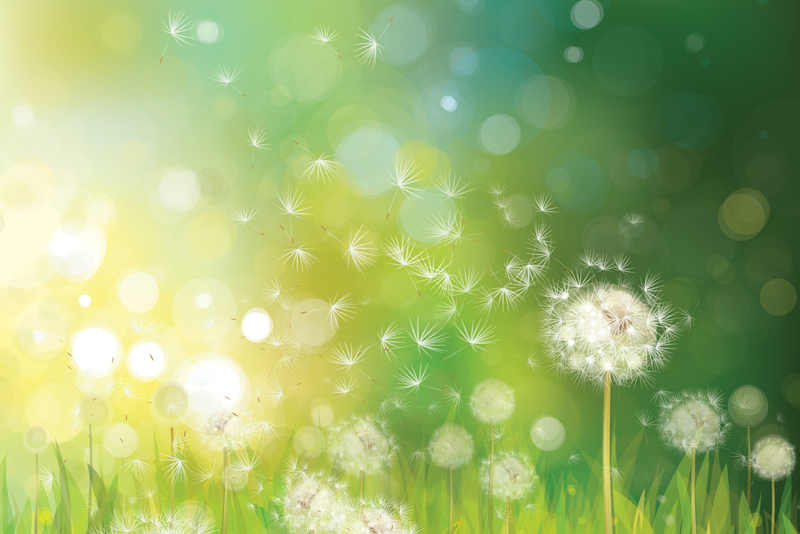Weather affects pollen

Are your allergy symptoms worse one day and then seem better the next? Check the weather and you may have your answer as to why your symptoms ebb and flow. Weather plays a direct role on a day-to-day basis. If you understand the weather’s impact on pollen levels, you can be your own pollen forecaster and determine whether the pollen count is low or high.
You can use the daily pollen report as a general guide but keep in mind it represents samples taken the previous day. For an up-to-date pollen forecast, you will need to factor in on-going changes in the weather near you such as air temperature, wind speed and humidity. This may help explain why you are experiencing symptoms even though the pollen report says the pollen is low. Doing these two things will help you reduce your pollen exposure and your allergy symptoms.
As an example, the pollen count in my area indicated the pollen was low even though the temperature was fairly high. The explanation was the amount of humidity in the air was keeping the pollen low. Pollen counts fall during times of higher humidity and rise during low humidity.
The pollen report will rate the pollen count as low, moderate or high. It also will tell you what types of pollen are out there. For instance, it could be trees, grass, chenopods or mold. So, if you have severe grass allergy and the grass pollen levels are high, you likely will develop allergy symptoms.
Now, here are some things you should know to be your own pollen forecaster. Air temperature, wind speed and humidity all affect how much pollen and mold all influence the amount of pollen in the air.
•Hot, dry, windy days produce more pollen and mold.
•Rainy, cloudy or windless days tend to have lower pollen level.
•Rain tends to wash pollens from the air. A gentle, long rain will do an efficient job of washing pollen from the air.
•Thunderstorms can stir more pollen into the air.
•Peak pollen times for many grasses tend to be early morning and early evening.
•Peak pollen release for other plants tends to be midday and afternoon.
•Pollen counts fall during times of higher humidity and rise during low humidity.
•The warmer the temperature, the greater the pollen. Plants like warm temperatures and produce more pollen. Colder air discourages pollination.
You can use the daily pollen report as a general guide but keep in mind it represents samples taken the previous day. For an up-to-date pollen forecast, you will need to factor in on-going changes in the weather near you such as air temperature, wind speed and humidity. This may help explain why you are experiencing symptoms even though the pollen report says the pollen is low. Doing these two things will help you reduce your pollen exposure and your allergy symptoms.
As an example, the pollen count in my area indicated the pollen was low even though the temperature was fairly high. The explanation was the amount of humidity in the air was keeping the pollen low. Pollen counts fall during times of higher humidity and rise during low humidity.
The pollen report will rate the pollen count as low, moderate or high. It also will tell you what types of pollen are out there. For instance, it could be trees, grass, chenopods or mold. So, if you have severe grass allergy and the grass pollen levels are high, you likely will develop allergy symptoms.
Now, here are some things you should know to be your own pollen forecaster. Air temperature, wind speed and humidity all affect how much pollen and mold all influence the amount of pollen in the air.
•Hot, dry, windy days produce more pollen and mold.
•Rainy, cloudy or windless days tend to have lower pollen level.
•Rain tends to wash pollens from the air. A gentle, long rain will do an efficient job of washing pollen from the air.
•Thunderstorms can stir more pollen into the air.
•Peak pollen times for many grasses tend to be early morning and early evening.
•Peak pollen release for other plants tends to be midday and afternoon.
•Pollen counts fall during times of higher humidity and rise during low humidity.
•The warmer the temperature, the greater the pollen. Plants like warm temperatures and produce more pollen. Colder air discourages pollination.

Related Articles
Editor's Picks Articles
Top Ten Articles
Previous Features
Site Map
Content copyright © 2023 by Sheree Welshimer. All rights reserved.
This content was written by Sheree Welshimer. If you wish to use this content in any manner, you need written permission. Contact Sheree Welshimer for details.



